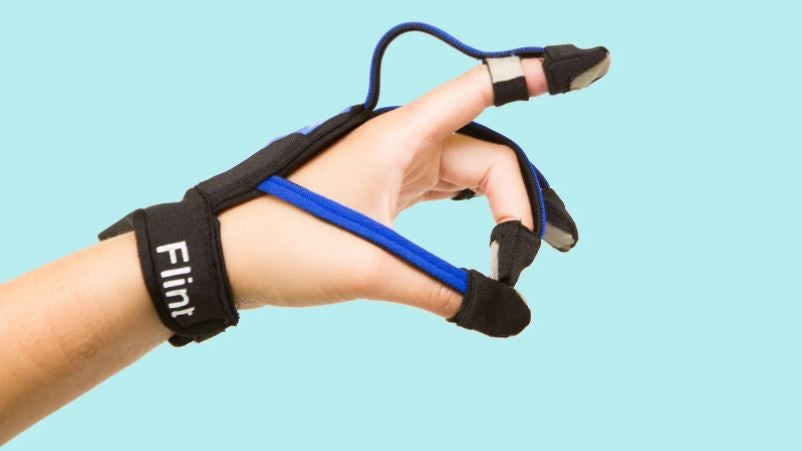Musical Glove Helps Stroke Patients Use Their Hands Again
Source: Klint Finley, (Originally Published on 2015)
The makers of Music Glove say their wearable device can help stroke patients regain their fine motor skills.
NEARLY 800,000 PEOPLE have a stroke each year. That's about one person every 40 seconds. It's the leading cause of long-term disability in the US, according to the Centers for Disease Control and Prevention.
There are many treatments that help stroke patients recover lost abilities. But the problem, says Nizan Friedman, founder of Flint Rehabilitation Devices, is that too few patients keep up with their therapy after leaving the hospital. "They're left at home, with just a list of exercises that the therapist gives them to do," he says. "It's just not motivating; people don't continue the therapy."
Friedman hopes to change that with Music Glove, a wearable computing device designed to help patients improve their fine motor skills. The glove is outfitted with tiny sensors that track the user's hand movements. Patients use it to play a Guitar Hero-style game that involves pinching and gripping notes on the screen of a tablet.
People were trying and crying afterwards. People who hadn't used their hands in months or even years were suddenly seeing benefit.
Nizan Friedman
These are, for the most part, the same sort of exercises they'd be told to perform after leaving the hospital. "In rehab the real elements to recovery are high repetition, doing a movement many times, and being motivated to do it day in day out," he says. Using music is a way to keep people from getting bored with doing the same exercises again and again. The research he's published thus far bears that out.
Made Possible by Cheaper Computing
Friedman, a musician, came up with the idea while working on his PhD in biomedical engineering at the University of California, Irvine. He worked under two professors: David Henkemeyer, a rehabilitation robotics expert, and Mark Bachman, a sensor expert and fellow musician.
Friedman wanted to combine robotics and music therapy, but the three of them soon realized a robotic hand would be too expensive. They came up with the idea of glove instead, which, Friedman says, worked better than they could have imagined. "People were trying and crying afterwards," he says. "People who hadn't used their hands in months or even years were suddenly seeing benefit."
That inspired them to found Flint Rehabilitation Devices. It is selling a home version, which is sold as a kit including the glove itself and a tablet computer designed specifically for it. The company also offers a therapist version that includes a desktop computer that boots right into the Music Glove software. Including task-specific computers is important, Friedman says, because it reduces the complexity of learning how to use the device. This makes it more accessible to people who aren't very tech savvy, and for therapists who don't have time to learn how to use new software.
Asked why something like this hasn't been attempted before, Friedman says it's mostly due to the falling costs of components and mobile devices. "Offering a 10-inch tablet for the price point we're selling the device wouldn't have been an option 10 years ago," he says. "Meanwhile, there are all these devices used in top rehab labs in the country, but they cost around $50,000."
The Music Glove is the latest example of how the falling costs of mobile computers are creating a wave of health and safety wearables, from high tech back braces that help prevent spinal injuries to Google Glass apps for autistic students to virtual reality therapy. Wearable tech may be struggling to find its reason for being in the general consumer market. But it's beginning to realize its promise in the healthcare world.


